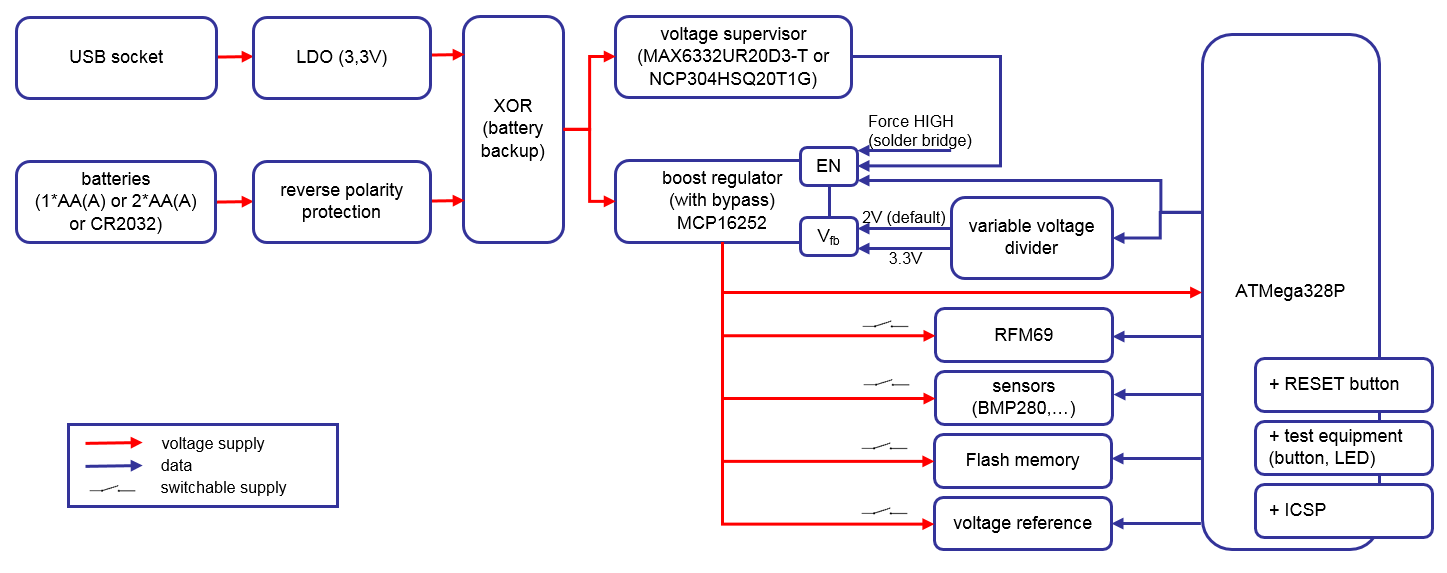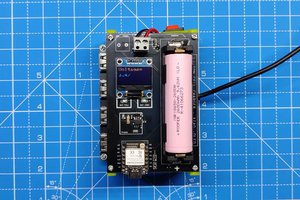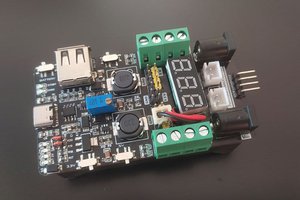FlexiNode is designed to operate with different sensors and with different power supply conditions. An ATMega328P is the main component to hold everything together.
Power Supply
FlexiNode can be operated by USB-cable (5V) and/or by battery (CR2032 (maybe), 1*AA(A) and 2*AA(A)). So it has to cope with voltages from about 0.9V up to 5V. Additionly it has to be a low power design.
Possible scenarios regarding the power supply are:
- USB-supply only (USB_ONLY)
- USB + battery backup (USB+BAT)
- battery only (BAT_ONLY)
The design is modular, so only parts regarding to the selected scenario have to be soldered (example: USB_ONLY scenario don't need a boost regulator)
The voltage has to be always sufficient for the ATMega (low clocking), the sensors and the RFM69. So the 'normal' operating voltage for the ATMega is 2.0V, when needed it can be risen up to 3.3V.
Sensors
Many sensors can be used (max. 3.3V only), but regarding this topic, I'm in an very early stage. An important sensor for me is BMP280.
RFM69
There are many possible wireless solutions transfering the data from the nodes to the server (maybe openHAB with MQTT). I chose the RFM69 module because of its size, power consumption and its range.
In general: I'm posting this project to discuss details, improve my english skills and to share my ideas. So any constructive comments are highly appreciated.
 AndreasVS
AndreasVS


 Arnov Sharma
Arnov Sharma
 Alpenglow Industries
Alpenglow Industries

 SAYANTAN PAL
SAYANTAN PAL